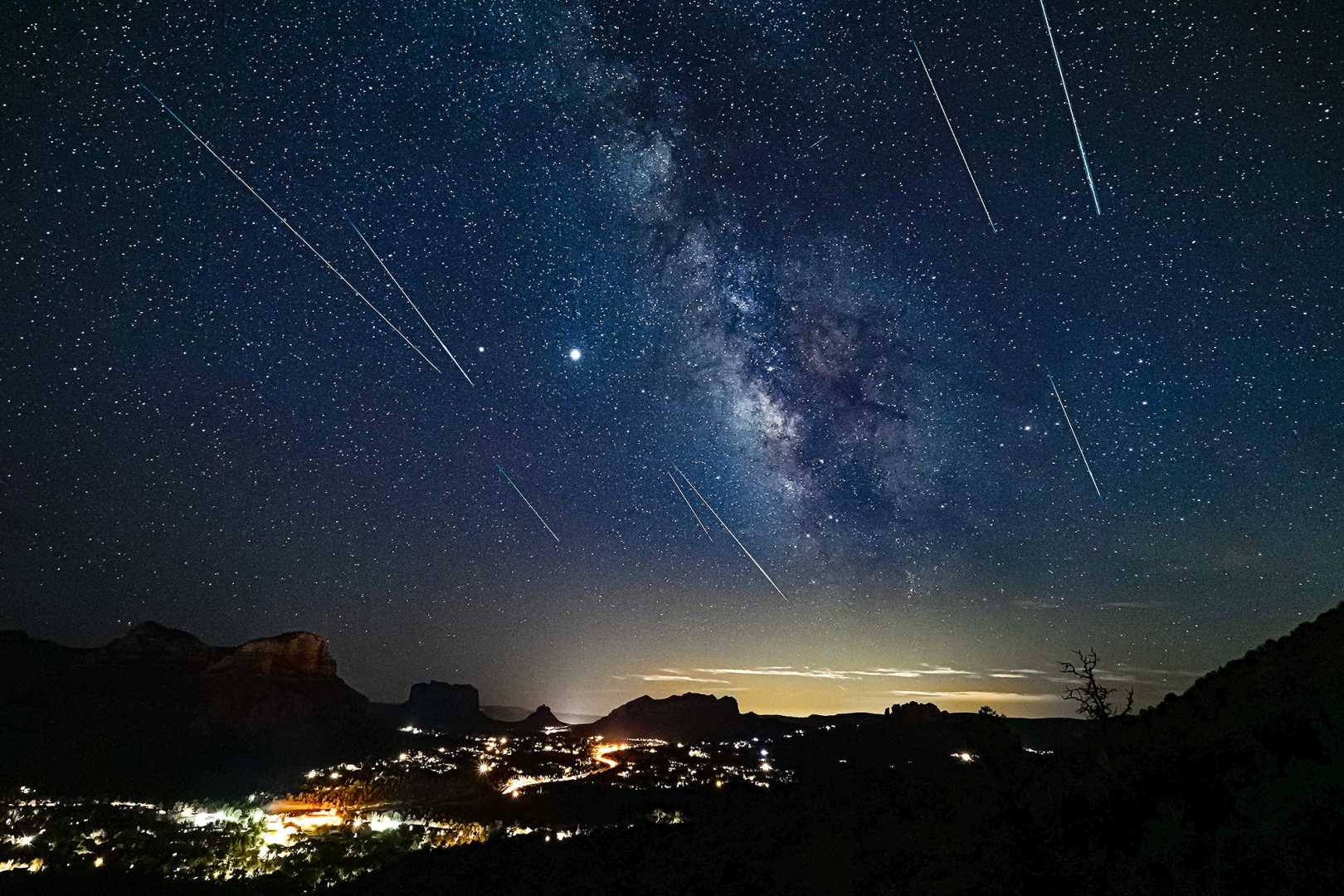News
Best Meteor Shower Viewing This Week Despite Bright Moon

FLAGSTAFF, Arizona — Skywatchers may find a rare opportunity to see shooting stars this week, despite the bright moon’s interference with the upcoming Perseid meteor shower. The Southern Delta Aquariids and Alpha Capricornids meteor showers will peak on the night of July 29 into July 30, providing a better chance for viewing.
This year, the Perseids will peak on August 12 but may be less visible due to the moon being near full at that time. “The glare of the moon is really a killer,” said Moskovitz, a planetary astronomer at the Lowell Observatory. He noted that the brightness will significantly reduce the visibility of the Perseid meteors.
In contrast, the Southern Delta Aquariids and Alpha Capricornids are expected to produce 20 to 30 meteors per hour. According to Moskovitz, meteor showers happen when Earth passes through debris left by comets or asteroids orbiting the sun. As Earth collides with these tiny rock particles, they create bright flashes in the sky.
“It might look like this big bright streak across the sky, but those shooting stars are coming from bits of debris as small as pieces of dust, grains of sand,” said an astronomy educator from the Adler Planetarium. He emphasized that the best time to view will be after midnight when the skies are generally darker.
For optimal viewing, Moskovitz urges people to find locations free of artificial light. “Put your cellphone down,” he advised. Adjusting to darkness can take 15 to 30 minutes, which is crucial for spotting dim meteors.
To witness the Southern Delta Aquariids, viewers in North America should look towards the southern sky. While the Alpha Capricornids may not produce frequent meteors, they can occasionally deliver spectacular fireballs. Moskovitz expressed that if there’s a chance to see a rare event, it’s likely to be an Alpha Capricornid.
Even if clouds obstruct the sky on Tuesday, observers can catch meteors in the days leading up to and following the peak times. Miller noted that the summer hosts several overlapping meteor showers, and he recommends seeking dark locations for the best experience.
Despite the predicted interference from the moon, Miller believes the Perseid meteor shower could still be worth watching. “The Perseids are well-known for producing both a high volume of shooting stars and particularly bright ones,” he stated.
Looking to the future, Moskovitz forecasts a significant outburst for the Perseids in 2026, suggesting that this year’s observations could aid in refining predictions. “That one could be hundreds of meteors per hour,” he noted.












